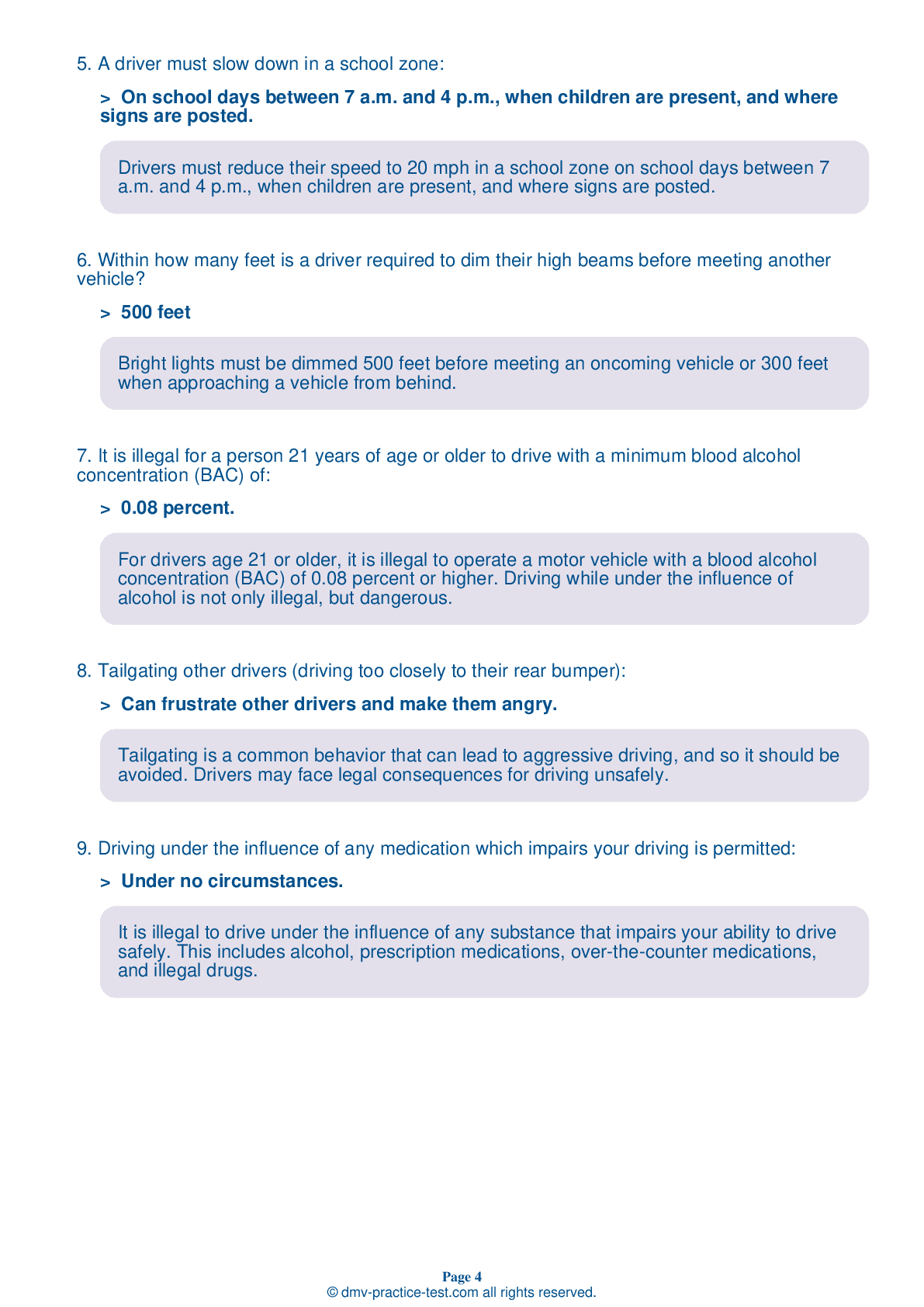FREE Illinois DMV Practice Test #10 Page 3 of 3
For January 2025, this set of Illinois DMV practise tests has been updated. It includes questions based on the most important traffic signs and rules for 2025 from the Illinois Driver Handbook. To study for the DMV driving permit test and driver's licence exam, use actual questions that are very similar (often identical!) to the DMV driving permit test and driver's licence exam.
Each question on the practise exam has a tip and explanation to help you recall the ideas. Questions about traffic rules, traffic signs, and driving statutes, as well as information from the Driver Handbook, will be included in the written portion of the official DMV test.
You must properly answer 38 of the 35 questions to receive a passing mark. To help you prepare for your Illinois instruction permit or driver's licence, take our DMV practise test.
The DMV exam is offered in a variety of languages.
Using any form of testing help will result in an automatic fail, and the DMV may take further action against your driver's licence, so avoid it.
25 . This road sign means:

Warning signs provide notice to road users of a situation that might not be readily apparent and are usually yellow with black markings. This sign warns drivers of an upcoming intersection so they may prepare for potential traffic or prepare to turn.
26 . After making a proper stop and yielding to traffic or pedestrians within the intersection, it is permissible for drivers on a one-way street to turn left at a red light onto another one-way street that moves traffic to the left.
It is permissible to make a left turn at a red light when turning from a one-way street onto another one-way street that has traffic moving to the left. Before turning, you must come to a complete stop and yield the right-of-way to oncoming traffic and pedestrians.
27 . When you see this road sign, you should:

Warning signs are usually yellow with black markings. This sign indicates that a divided highway is beginning and cars should keep to the right.
28 . This sign means:

Warning signs are usually yellow with black markings. They alert you to conditions that are immediately ahead. This sign warns that you are leaving a separated one-way highway and will soon be driving on a two-way highway.
29 . When driving in work zones, you should:
When entering and driving through a work zone, slow down and be prepared to stop. Obey posted speed limits and be alert to conditions around you. Workers could be present.
30 . Motorcyclists are entitled to use the full width of a traffic lane. A driver should pass a motorcycle the same way a driver would pass another vehicle.
Although there may be enough room in the traffic lane for an automobile and a motorcyclist, a vehicle driver should remember that the motorcyclist needs the room to maneuver safely and is entitled to the entire lane. A vehicle driver should not share the lane with motorcyclists.
31 . It is permissible to pass on a two-lane two-way roadway within 100 feet of an intersection or railroad crossing.
There are number of situations in which it is prohibited to pass on a two-lane two-way road. One of these is when you are within 100 feet of an intersection or railroad crossing.
32 . If a child is about to run into the street, you should:
If there is danger, you may need to sound a sharp blast on your horn. Do this when a child or any other pedestrian is about to enter into the street in front of your moving vehicle.
33 . What should you do when you see this sign?

A round sign means you are approaching a railroad crossing. This sign is posted a few hundred feet in front of the tracks and tells drivers to slow down, look, listen, and prepare to stop.
34 . This sign is a:

Warning signs are usually yellow with black markings. They alert you to conditions that are immediately ahead. There may be an upcoming change in traffic direction, a steep downgrade, or another potentially hazardous situation that requires action on the part of the driver.
35 . If you plan to pass another vehicle, you should:
Even when you signal, you should not assume that the space you want to occupy is free or that other drivers will give you the right-of-way.
Need Car Insurance? No problem!
Compare the best rates in Illinois and find a personalized policy that meets your needs.
1. Are You Currently insured ?
2. Married ?
3. Do you own your Home?
4. Do you have more than 1 car ?
5. Have you or a Family Member Honorably Served in U.S. Military ?
6. Your Name
7. Age
8. Zip code
IMPORTANT REMINDER:Auto Insurance is Mandatory to drive in Illinois. Get covered before you hit the road to avoid any fines.
Ranked by best match



